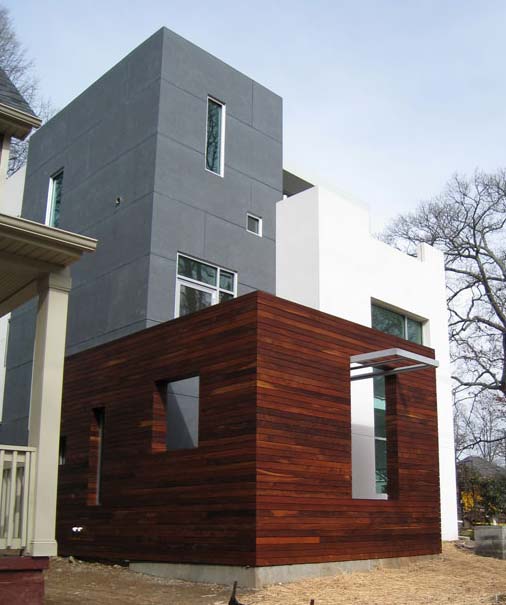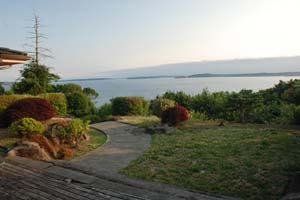Rethinking Natural Wood Siding
While waiting patiently for the construction permits to get issued, I’ve been thinking really hard about the ramifications of using natural stained wood on heavily exposed areas of my house. It’s been a concern of mine from the very beginning, but only after seeing in person what happens to Brazilian Ipe after a year in the sun and rain have I started to really question whether or not I want so much exposed wood on the outside of my house. Ipe is such a dense wood that you aren’t even supposed to stain it, but in order to keep it from silvering, you pretty much need to oil it down every year. Considering that part of this wood will be inside and part will be outside, I’m just not convinced I can maintain anything close to a uniform, “newish” appearance no matter what I do (and I don’t want to oil or stain a good portion of the house every year).
This concern seems to fly in the face of a lot of modern architecture lately, especially in the Pacific Northwest. Take a look at some really nice wood-heavy modern designs from the last few years:

Build LLC

PB Elemental

Scott West

SkB Architects

Unknown
While all of these houses look spectacular, I just can’t help but wonder what they will look like in 5 or 10 years, especially in a climate like Seattle that gets quite a wide range of weather. From what I can tell, it’s the sun more than the water which makes wood fade or go silver, so maybe in that sense, Seattle isn’t so bad.
Because of my concerns, I’ve been exploring alternatives including the following:
- Using another wood like mahogany or cedar, which may be easier to stain when it starts to fade
- Painting the wood from the get-go, or at least being ready to paint it if and when its appearance goes downhill
- Using a synthetic wood paneling system which should hold up indefinitely to the elements
- Using a plastic-aluminum cladding system and tucking a bit of wood accenting in sheltered areas of it
If anyone has any experience that could be helpful, I’d love to hear it. Once again, here is the mostly-final design we’re talking about:


